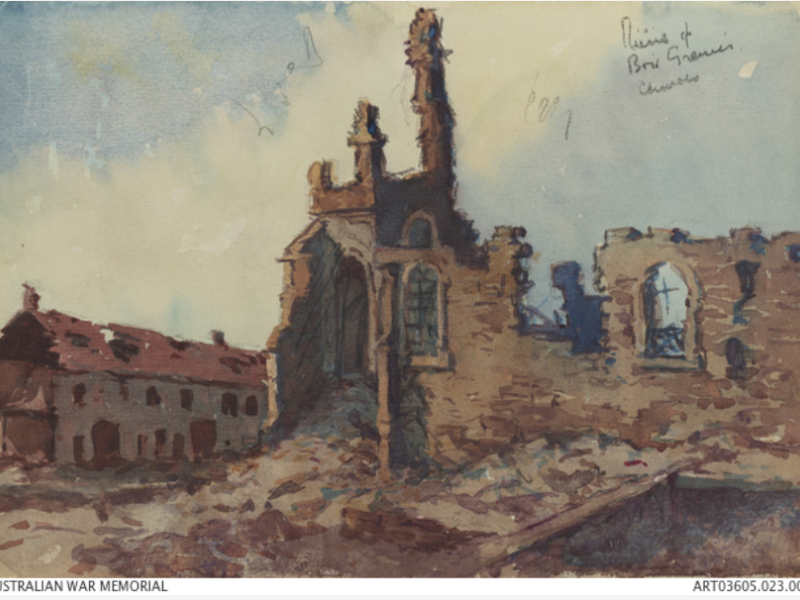Private Charles Francis Weatherstone, 9th Battalion, AIF
Popularly known as “Charlie”, Charles Weatherstone was born in 1890 in Grafton, New South Wales, to Adam and Mary Weatherstone. The sixth of nine children, he grew up in Grafton and attended the local public school. By the outbreak of the First World War, he was working as a factory hand in Grafton.
Weatherstone enlisted in Grafton on 29 July 1915, and after initial training he was allotted to the 6th reinforcements to the 25th Battalion. He embarked from Brisbane in October aboard the transport ship Seang Bee, bound for Egypt.
In Egypt, Weatherstone was sent to the 7th Training Battalion at Zeitoun, near Cairo. In late February he was transferred to the 9th Battalion and posted to C Company, and on 27 March sailed for France.
By mid-April the 9th Battalion was in reserve billets near Rouge-de-Bout, one mile behind the front line in the Armentières or “nursery” sector. Intermittent artillery fire was landing nearby.
Early in the afternoon of 20 April 1916, tragedy struck when the battalion’s C Company billets were heavily shelled. A shell landed outside a canvas tent, wounding four soldiers. As men went to assist, another shell landed amongst them, killing several and wounding others.
A further shell hit a brick wall of a nearby billet causing a further 47 casualties. C Company was decimated, with 25 men killed and a further 50 wounded, one of whom was Weatherstone.
He had gone to the aid of a wounded comrade, and suffered multiple shrapnel wounds as another shell exploded nearby. Weatherstone was evacuated to the 7th Casualty Clearing Station but his wounds proved fatal and he died on 28 April.
He was 26 years old. He had been at the front for two weeks.
Charlie Weatherstone was laid to rest in the Merville Communal Cemetery 20 kilometres south-west of Armentières.
His name is listed on the Australian War Memorial Honour Roll, among more than 60,000 Australians who died while serving in the First World War.
Michael Kelly, Historian, Military History Section
Image: Watercolour depicting the ruins of the Bois-Grenier church with a bomb-damaged building to left. Artist: George Benson c.1916. Bois Grenier, part of the Armentieres region in northern France, was a 'nursery' sector to which fresh troops were sent to gain experience of conditions on the Western Front.

 Australian War Memorial
Australian War Memorial